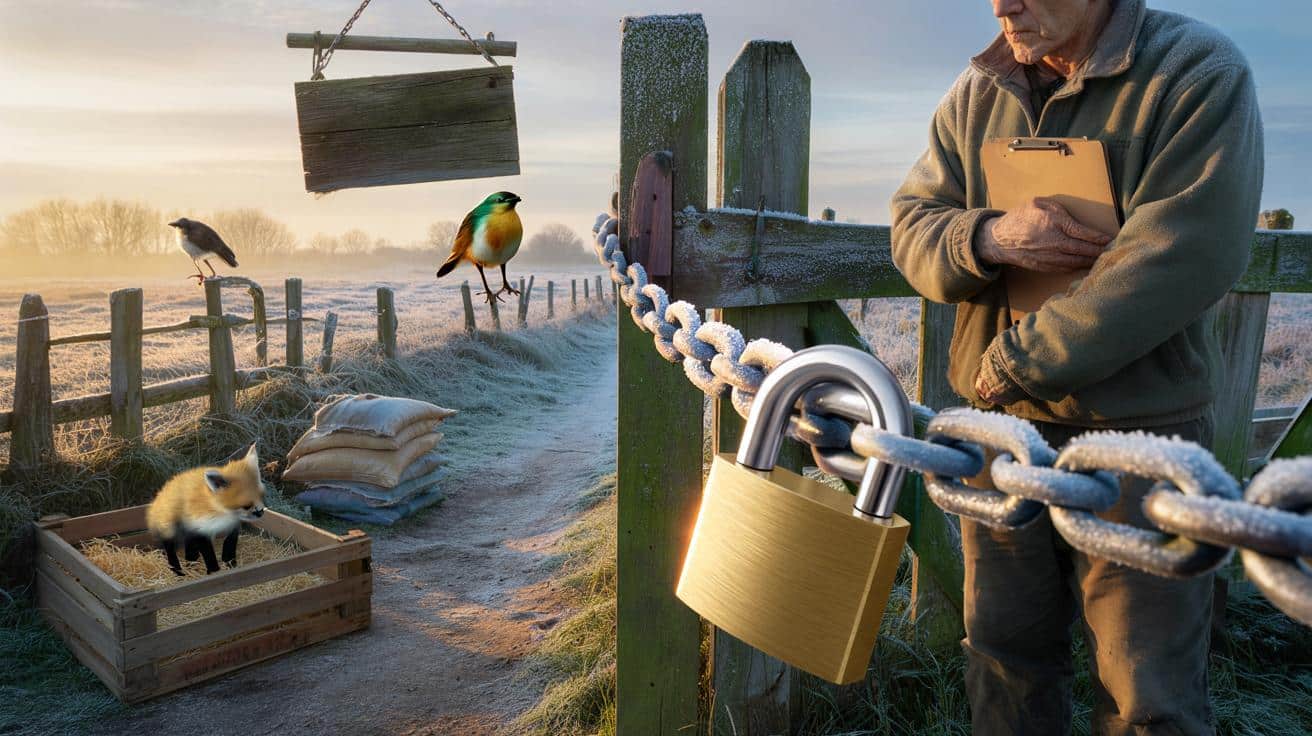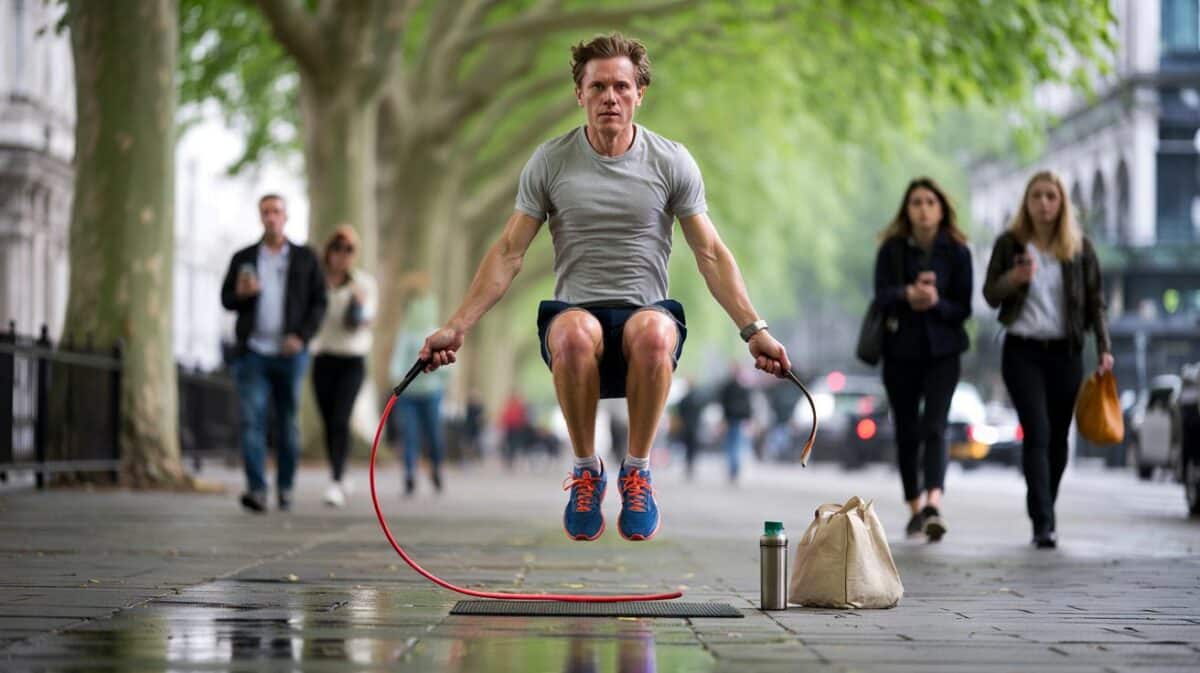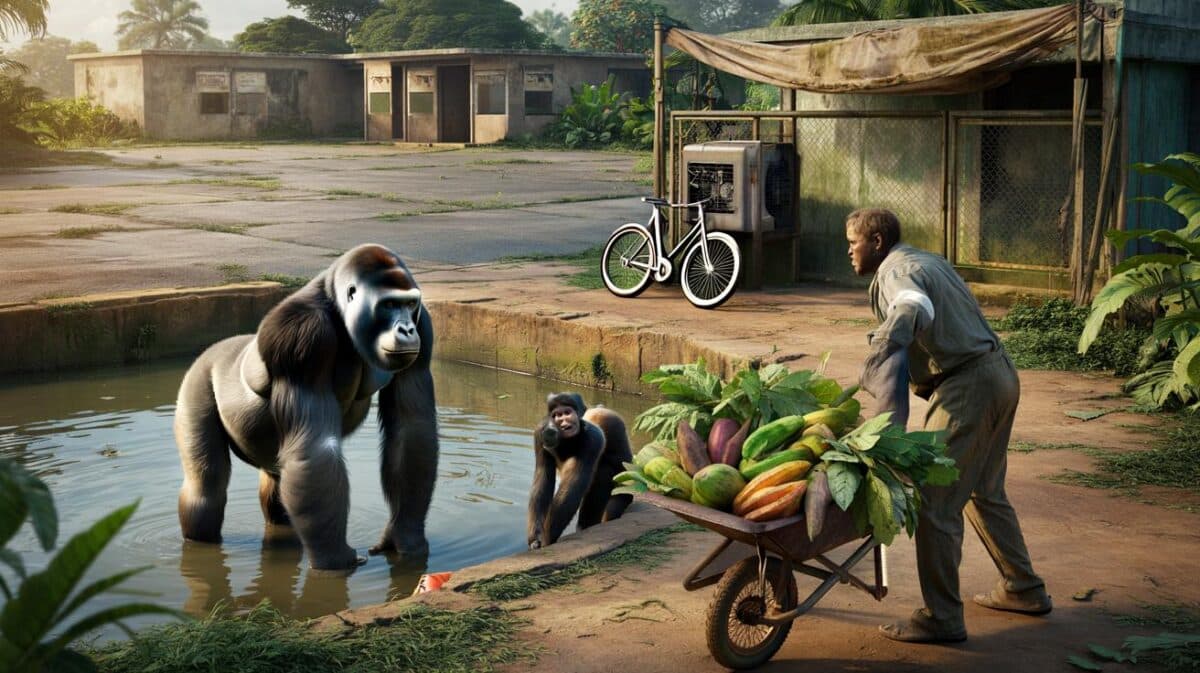Rising costs and dwindling donations have finally met in the middle. Volunteers are tired, the manager is counting feed sacks like a grocer, and the phone won’t stop ringing. The question hangs in the air: what happens to the animals, and the people, when a place like this says goodbye?
The frost never quite lifts from the paddock until mid-morning. A robin follows us along the fence, bold as brass, while a young fox blinks from a wooden crate as if the world is too bright today. A woman in a faded fleece sets down a flask and rubs her hands, waiting for the vet with the gentle voice. You can still smell straw and disinfectant and damp hedgerow. We’ve all had that moment when a place you thought permanent suddenly feels temporary. The sign at the entrance wobbles in the wind, the paint chipped by years of sun and rain. The director touches it with a thumb, then folds the clipboard to her chest. The new padlock sits on the desk, small and shiny, like a dare. The decision is made. The week ahead is a map of goodbyes. The padlock feels heavier than it looks.
Seventeen years, counted in paw prints
After 17 years, the sanctuary will lock its gates for the last time. The decision is not drama; it’s the sort of quiet end that sneaks up on community projects that run on grit and kettle steam. You feel it in the cracked concrete by the intake shed, in the frayed rope on the release pen, in a manager’s voice that won’t rise above a careful calm. This place began as a muddy field and a promise. It turned broken wings and orphaned kits into wild returns, one small triumph at a time.
Ask anyone who has stood here at dusk. They’ll tell you about the barn owl called Bramble, released to a sky the colour of ash, and how a little girl named Elsie watched with her mouth open as the bird climbed and vanished over the hedge. They’ll mention the midnight phone calls, the hedgehogs with plastic ring injuries, the cygnet with fishing line like a noose. They’ll mention winter mornings when the taps froze and someone boiled water on camping stoves to wash bowls. The stories stack up like feed bags, each one a reason the gates stayed open a year longer.
So why close now? The short version: costs ballooned while donations thinned. Veterinary bills rose, fuel prices ate the transport budget, and grants tilted towards projects with flashier tech. Volunteers, the beating heart, are a finite resource. A sanctuary is a balancing act between compassion and logistics, and lately the spreadsheets have stopped bending. This is a managed wind-down, not a collapse. Animals are being moved, pens are being scrubbed one last time, and the final two weeks read like a to-do list written in pencil and hope.
What happens next: animals, people and promises
The plan sits on a whiteboard in black marker. Admissions are now emergency-only. Every current resident has a line: transfer, release, foster, or specialist care. Transfer crates are labelled by species and stress level, because noise matters when you’re moving a wild heart. Release candidates are stepping down to soft-release pens near where they were found. Phone calls circle through a network of partner centres, like a quiet radio net. It’s meticulous work done by people who know that timing saves lives.
There’s a natural rush to help, and some well-meant mistakes can creep in. People show up with bread for ducks or cows’ milk for hedgehogs, thinking comfort translates. It doesn’t. Call first, take a photo, note the location, keep a safe distance. If you can drive, offer to ferry animals to partner centres. If you can’t, drop off fuel vouchers or good quality towels. Soyons honnêtes : personne ne fait vraiment ça tous les jours. Routine is a privilege in rescue work; what matters now is one good action, taken today.
This moment needs clear words and simple tasks.
“We’re closing gates, not hearts,” says the manager, knotting her hair back with a band she keeps on her wrist. “The animals are not being abandoned. Every single one will have a plan.”
- Offer transport for scheduled transfers this week.
- Donate long-life supplies: disinfectant, syringes (sealed), puppy pads, fish-based cat food for hedgehogs.
- Share the sanctuary’s official updates, not rumours.
- Write a note to the volunteers who taught your child how to spot a badger track.
The animals are not being abandoned. The line bears repeating, because panic loves a vacuum.
The day after the padlock
The gates will fall quiet, but the hedgerows won’t. Foxes will still thread the allotments, owls will still map their routes by sound, and people will still stumble on a creature in trouble at 7:15 on a rainy Tuesday. *The work of care never really ends.* What changes is the address, and maybe the way we think about support. Smoother funding, more shared transport, fewer lone outposts with heroic burn-out baked into the job. That’s the conversation brewing in the group chats tonight, between photos of empty pens and messages that simply say “thank you”.
| Point clé | Détail | Intérêt pour le lecteur |
|---|---|---|
| Why the sanctuary is closing | Rising costs, fewer grants, volunteer fatigue after 17 years | Context for the decision and where responsibility truly sits |
| What happens to the animals | Planned transfers, soft releases, specialist placements | Reassurance that care continues beyond the gate |
| How you can help | Offer transport, donate practical supplies, share verified updates | Simple actions that make a measurable difference this week |
FAQ :
- Why is the sanctuary closing after 17 years?Costs outpaced income, and the team chose a careful wind-down rather than risking standards of care.
- What will happen to the animals currently on site?Each has a plan: transfer to partner centres, soft release near rescue sites, or specialist rehab if needed.
- Can I bring an injured animal now?Phone first. Admissions are emergency-only, and the team will redirect you to the nearest active centre.
- Will the sanctuary ever reopen?There’s no promise of a comeback, though the charity may keep advising and supporting regional partners.
- What’s the most useful thing I can do today?If you can help, act this week, not next month. Offer a lift for transfers, donate fuel or supplies, and amplify verified updates.
On a wet Thursday, a boy presses his nose to the fence and asks if the deer will miss the people. Somebody says the deer will miss nothing but the easy grass. It’s a good answer and a kind one. Human hearts are another story. The sanctuary has been a quiet glue for its neighbours, a place where strangers learned the patience of cleaning a kennel properly and reading a fox’s eyes before moving closer. The gates will close. The habits don’t have to. If this ending lands in your feed tonight, share it with someone who keeps birdseed by the back door. Share it because the wild doesn’t read timetables. Share it because a padlock is only a hinge in time, and care can swing both ways.








